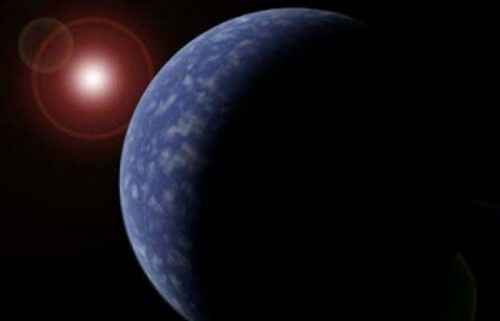So say scientists who discovered eight planets around eight red dwarfs at a distance of 15-80 light years from us, of which three are super-Earths in the habitable zone

Three new planets classified as super-Earths in the habitable zone of their systems are part of eight new planets orbiting nearby red dwarfs. These planets were discovered by an international team of astronomers from Great Britain and Chile.
The study identified that almost all red dwarfs in the environment have planets, which means that very many of these types of stars, which make up a quarter of the stars in the universe, have planetary systems surrounding them.
The researchers also hypothesize that planets slightly larger than Earth (which is why they are called super-Earths), where liquid water may exist and are therefore potential candidates for life support, orbit red dwarfs in the Sun's 'neighborhood'.
These discoveries were made by analyzing data from two high-resolution surveys of the sky HARPS (High Accuracy Radial Velocity Planet Searcher) and UVES (Ultraviolet and Visual Echelle Spectrograph). Both of these surveys operate at the Southern European Observatory in Chile. By combining the data from the two surveys covering different wavelengths, the team members were able to obtain signals that were not strong enough to be seen in the data from each individual instrument.
Dr. Mikko Tuomi from the Center for Atherophysical Studies at the University of Hertfordshire, the lead researcher in the article says: "We looked at the UVES data alone, and noticed variations that could not be explained as random noise. By combining the HARPS data, we were able to locate all of these impressive planets.
We clearly see a large population of minor planets, and expect to find even more in the near future and even around the nearest stars to the Sun.”
To find evidence of these planets, the astronomers measured how the stars "oscillate" in space due to the influence of the planets' gravity. When an invisible planet orbits a distant star, the gravitational pull causes the star to move slightly back and forth in space. These cyclical fluctuations are revealed in the starlight.
The team members used innovative analysis techniques to extract these signals for the existence of planets from the data. In particular, they applied Bayes' law to conditional probabilities, which makes it possible to answer the question "what is the probability that a given planet has planets based on the available data." This approach, along with a technique that allows researchers to filter out noise in the measurements, made the discovery possible.
Prof. Hugh Jones, also from the University of Hertfordshire commented: "These findings were expected due to the fact that studies of distant red dwarfs using the Kepler space telescope indicated a significant population of minor planets, so I am pleased that we were able to confirm this result with a sample of stars One of the brightest of their kind."
The new planets orbit suns that are 15-80 light years away from us and their cycles vary from two weeks to nine years. This means that these planets orbit their suns from 5% to 4 times the distance of Earth from the Sun (or 0.05-4 AU).
For information on the University of Hertfordshire website

3 תגובות
If a research spacecraft swims to them how long will it take? It will surely be shorter than a trip to Mars
Phew! 15 light years sounds so close.. When will we reach such distances?